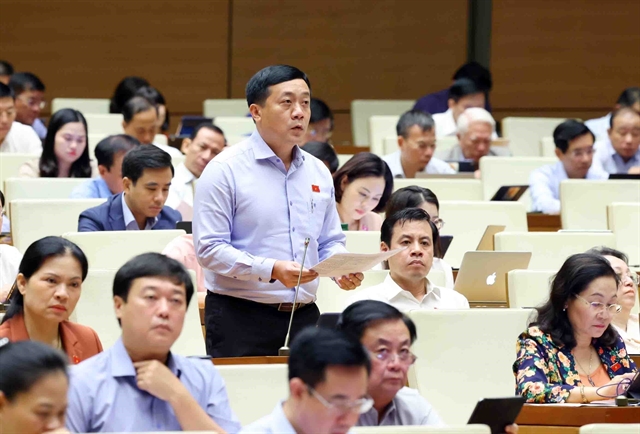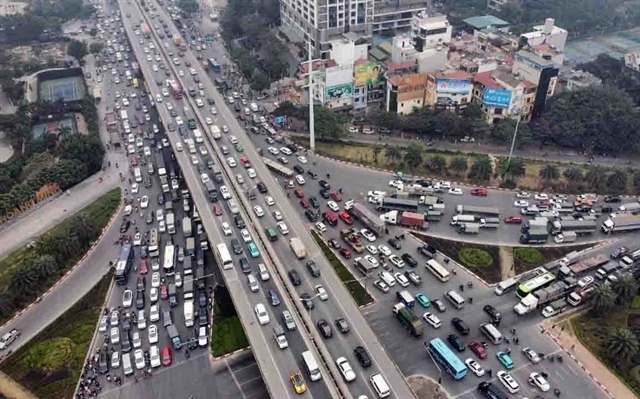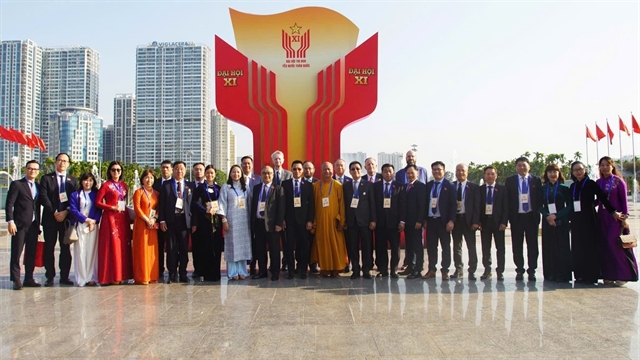 Politics & Law
Politics & Law

 |
| A bird's eye view of Belt Road No. 3 in Hà Nội. — VNA/VNS Photo Phạm Kiên |
Dr. Đào Ngọc Nghiêm spoke to Vietnam News Agency about the current state of urban transport in Việt Nam and solutions to address the challenges.
What do you think of the current state of urban transport in Việt Nam?
Transportation infrastructure is a critical element of urban development, underscoring its growing importance.
Việt Nam has a long history of growing urban areas, but the country's urbanisation rate is still below the global average.
By the end of 2023, the national urbanisation rate was approximately 42 per cent, with 902 urban areas, including the cities of Hà Nội and HCM City. The goal is to reach at least 45 per cent urbanisation by 2025, with 950-1,000 urban areas.
Urbanisation will transform an area, particularly in terms of the transport infrastructure. This is evident from the synchronised development of roads, railways, aviation and waterways. The transportation network has also focused on regional and national connectivity.
Urban transport development in Việt Nam has embraced modern global trends, such as urban railways and fly overs, with advanced management technologies.
However, there are still issues, such as the transportation network not keeping pace with urban development and population growth.
Could you elaborate on the existing challenges in developing an urban transport network?
The rapid pace of urbanisation and deeper integration is putting significant pressure on infrastructure development and pollution levels.
The development of the transportation network does not match the pace of urban growth and growing population. The proportion of land allocated for transportation, including road systems and static transportation, is still low, especially in major cities like Hà Nội.
For instance, Hà Nội needs 20-25 per cent of urban construction land for transportation, but currently, it only reaches about 12 per cent. Specifically, static transportation (parking) requires 3-4 per cent of land, but it currently only achieves 0.4 per cent.
Public transport has also not attracted enough users so the structure of transportation modes is unreasonable and the rise in private vehicles exceeds expectations.
Local authorities also lack specific policies to attract investment resources for road network construction, parking lots and other infrastructure. They have not applied new technologies to enhance capacity and strengthen inspections and public awareness of traffic culture remains limited.
What solutions do you propose for urban transport development?
Developing general technical infrastructure and transportation systems should always be prioritised as key areas for planning breakthroughs.
For large cities, with a long development history, the unique transportation system requires a comprehensive understanding and the application of innovative solutions for sustainable urban development.
In terms of planning, ministries, sectors and localities are revising the system towards multi-sector integration. However, to develop a synchronised urban transportation system, both general planning and provincial transportation sector planning are necessary.
For example, HCM City has a resolution on piloting special development mechanisms and policies. Similarly, Hà Nội is finalising the amended Capital Law with outstanding mechanisms for infrastructure development. From these policies, provincial legal documents are needed to implement them effectively.
In transportation infrastructure development, priority should be given to public transport with large and medium-capacity modes while currently many cities are focussed on developing urban railways.
This trend requires building specific technical systems suitable for each urban area, especially when applying the transit-oriented development (TOD) model.
In major cities, alongside breakthroughs in public transport, static transportation development is crucial.
Recent pressure highlights the imbalance between population growth and personal vehicle use.
The implementation of the 2024 Land Law will enable underground parking spaces to be built and address bottlenecks in projects, for instance underground parking lots that were initiated by Hà Nội and HCM City many years ago but are now slowly being built.
From the perspective of socio-economic development and sustainable urban development, each urban area, especially major cities, must identify breakthrough points in synchronised infrastructure development, with a focus on the transportation system. This approach will gradually alleviate urban transportation pressures. — VNS




